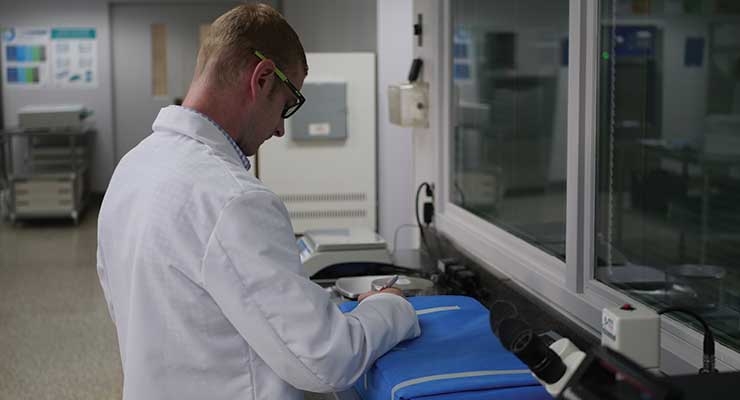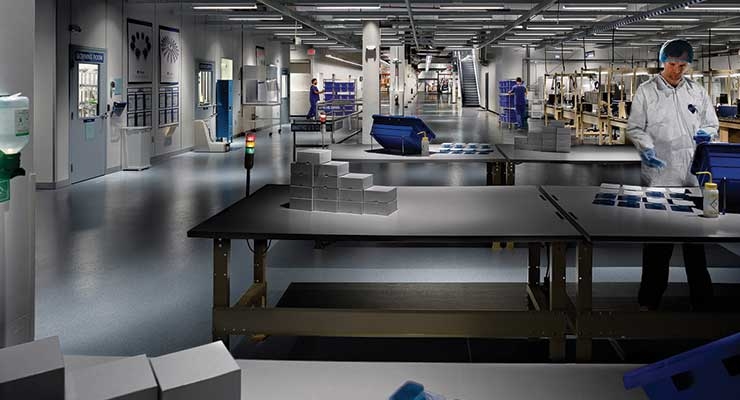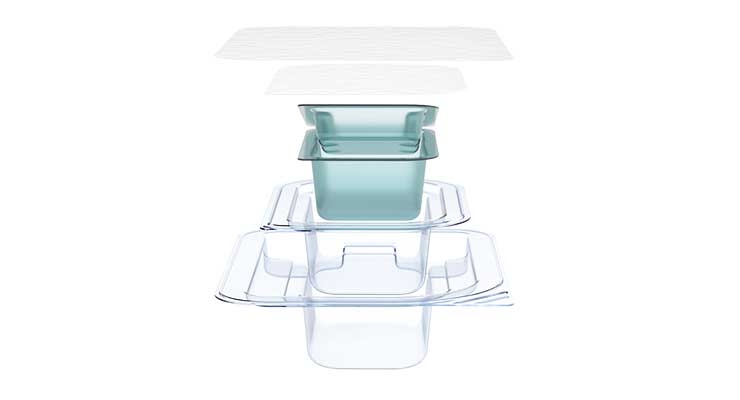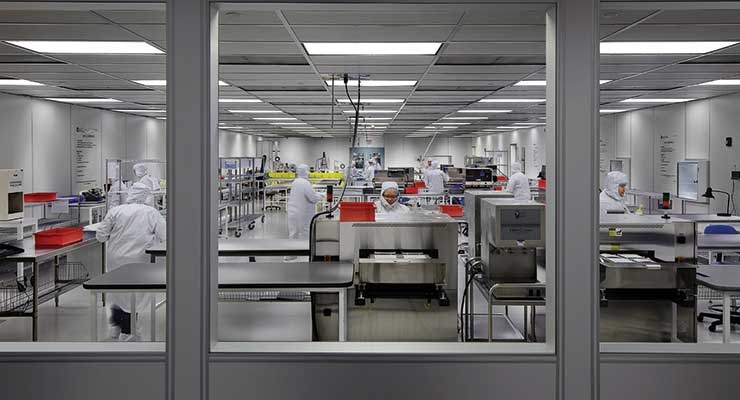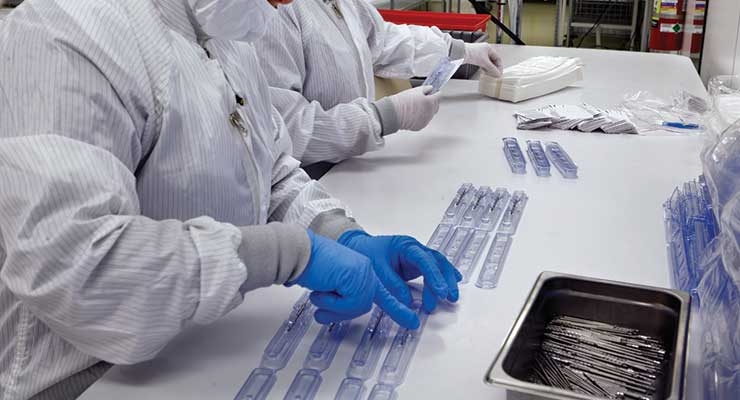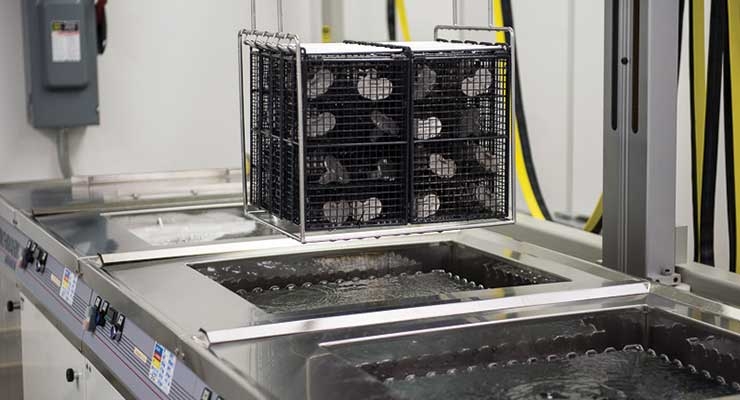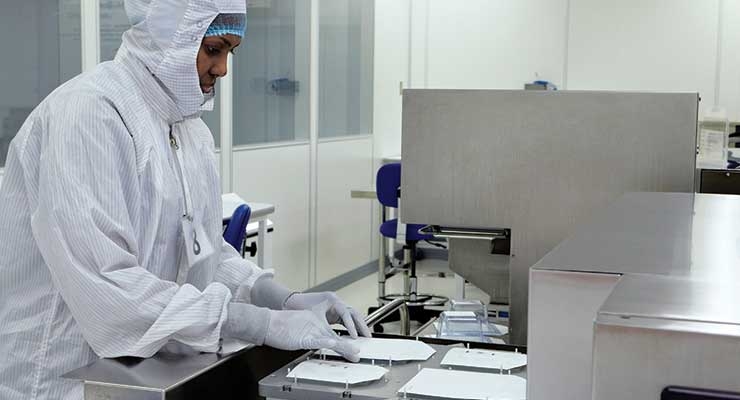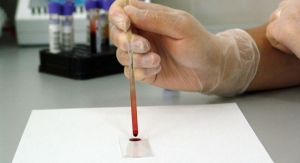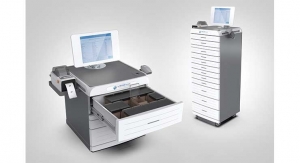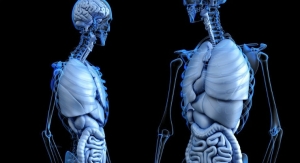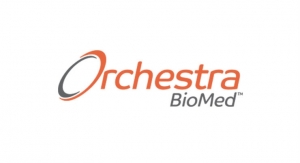Mark Crawford, Contributing Writer06.13.19
Packaging and sterilization services continue to be expanding fields within the medical device industry. Although some companies still rely on traditional sterilization methods and legacy packaging materials such as Tyvek and nylon, these are becoming less common for increasingly complex devices, sensitive materials, or combination products. It is also harder for traditional methods and materials to meet tougher regulatory standards. Whenever possible, medical device manufacturers (MDMs) still prefer straightforward materials and processes that are already validated and avoid modifications to standard approaches. For example, when a major material or pouch manufacturer changes materials, OEMs must work to validate the new materials.
“However, this can also be an opportunity for OEMs to look at other materials and processes they perhaps could not afford to develop in the past,” said Kathleen Feyti, technical sales manager for Packworld USA, a Nazareth, Pa.-based provider of sealing equipment for the healthcare industry. “Many customers are also looking for materials that can be recycled.”
The “big three” sterilization processes—radiation, ethylene oxide (ETO), and steam—are becoming less effective for complex devices, especially those made from sensitive materials or that include pharmaceuticals. More MDMs are interested in delivering products in smaller batch sizes for specialized, high-value applications. These situations often require specialized packaging and less-harsh sterilization methods, such as nitrogen or ozone.
With increased technological and regulatory challenges, MDMs are starting to realize the value in determining the best packaging and sterilization solutions early in the design process. Ease of use is a quality in great demand by end users—for example, during surgery, nurses prefer rigid, clear, thermoform tray materials over header bags or pouches due to their ability to visually inspect, handle, open, and dispense devices packaged in these systems. Digital connectivity (Internet of Things) in the form of smart electronic devices requires more work up front for packaging design and validation, as well as appropriate sterilization methods.
“The complexity of embedded materials in new, smart medical devices requires a sophisticated sterilization approach and development of adapted packaging designs,” said Brandon McKee, director of packaging development for West Pharmaceutical Services Inc., an Exton, Pa.-based designer and manufacturer of pharmaceutical packaging and delivery systems. “It is critical to consider processing methods early in development so that pharmaceutical manufacturers can optimize the overall system design and avoid pitfalls further down the road.”
The Internet of Things can also add value to the packaging materials themselves, such as real-time transmission of shipping conditions during transport. “Sensors can be located on packages that detect shipping stresses such as shock and environmental factors such as temperature that may need to be tightly controlled to maintain the integrity of the device,” said Jeff Barrett, CEO for J-Pac Medical, a Somersworth, N.H., contract manufacturer that specializes in single-use medical devices, biomaterial implants, and microfluidic reagent blisters.
Current Packaging and Sterilization Trends
Advanced procedures and technologies, such as heart valve placements and other minimally invasive procedures, often require innovative packaging solutions that add value, but ideally not cost. OEMs are always looking for creative ways to save money. “For example, can a tray be used for several stock keeping units [SKUs]?” said Seán Egan, director of global marketing and voice of customer development for Nelipak Healthcare Packaging in Galway, Ireland, a developer and manufacturer of custom-designed thermoformed packaging for the medical device and pharmaceutical industries. “Being able to do this allows the OEM to reduce raw material inventory levels and costs, due to being able to get a low price based on higher inventory levels requested to the packaging company. A universal tray with the right design can allow an OEM to place more finished goods in a pallet, increasing productivity and reducing sterilization costs.”
Regarding sterilization, “the industry has found itself in a position of limited operating capacity and outdated equipment,” said Matt Jordan, CEO for Centerpiece, a San Diego, Calif.-based provider of services ranging from product design through sterile product distribution. “Sterilization facilities built in the 1980s are simply not running as well as they should.”
ETO, in particular, is under intense scrutiny. Stringent ETO residual limits are being enforced by regulatory agencies around the world, making it harder to achieve validation. In addition, some ETO sterilization operations (Sterigenics, Viant Medical) have recently been closed for excessive levels of ETO emissions. In response, “many manufacturers are now going back and revalidating new cycles with new parameters to meet these limits, while others are looking at alternative sterilization processes for validation,” said Don Tumminelli, senior technical manager of client services for HIGHPOWER Validation Testing and Lab Services, a Rochester, N.Y.-based medical device validation and testing lab. “This sometimes leads to a redesign of the device. It is a time-consuming process, regardless if you revalidate new parameters for ETO or look for an alternative method.”
The need to reduce packaging costs is a constant pressure. This is especially true for validation and process verification for new products and materials, which can be complex and time-consuming. To streamline production and reduce costs, an increasing number of OEMs utilize single-package configurations across multiple product designs—as well as pre-validated materials and standardized platforms—to improve efficiency and speed time to market.
“For new products that will be subjected to further processing using existing equipment or sterilization methods, there is a general request to ‘standardize’ packaging to minimize impact on processes and equipment,” said McKee.
“Robust pre-validated packaging solutions can significantly cut time to market for new products by reducing validation lead times up to 50 percent, while also upholding patient safety and quality priorities,” added Benjamin White, engineering manager for business development for Millstone Medical Outsourcing, a Fall River, Mass.-based provider of cleanroom packaging, medical-device-specific warehousing, pre-validated packaging, and reverse logistics. “Millstone’s pre-validated packaging solutions can fit up to 80 percent of spine and ortho products, helping OEMs improve supply chain efficiency, reduce the environmental impact of packaging production, and control costs.”
Recycling has also become a packaging focus for MDMs, as hospitals and medical staff strive to reduce the costs associated with the classification of hazardous vs. non-hazardous waste that is generated during medical procedures. “In fact, the hospital community is committed to trying to reduce as much as they can, because 85 percent of their waste is considered non-hazardous and can be recycled,” said Melissa Green, global senior director of marketing and strategy for Tekni-Films, a Wayne, Pa.-based Tekni-Plex subsidiary that develops and manufactures innovative packaging materials.
What OEMs Want
Of course, OEMs want high quality and safety, low maintenance, and ease of use in their packaging and sterilization solutions. OEMs and tray manufacturers desire materials that can be sterilized with gamma radiation and ETO, withstand transportation requirements, and maintain shelf life. Cost reduction is also a constant urgency—for example, packaging with fewer layers (less material used, easier manufacturing). Moisture and/or oxygen barrier materials that can act as the primary package are also a frequent request.
“The ability to use a single material as the primary package reduces complexity in the packaging process [no foil overwrap or tray-in-tray] and simplifies supply chain requirements for manufacturers,” said Green. “OEMs are looking to package devices in single, primary trays that incorporate either oxygen or moisture barrier, or both, without adding foil barrier overwrap or the need to default to a dual sterile barrier, tray-within-tray package design.”
OEMs also have a keen interest in process capability and production process monitoring. They want assurance that processes are stable and capable of providing reliable product quality during production processing. As FDA and ISO standards continue to evolve (and remain somewhat open to interpretation), OEMs count on their packaging and sterilization partners to keep them up to speed on the latest developments and technologies.
“OEMs must comply with ever-changing standards and we maintain a birds-eye view of the regulatory landscape to provide expert help navigating these complexities,” said White.
There is intense pressure on OEMs to get products to market quickly and safely. The faster an OEM can get a device into the market, the sooner it can gain market share and start recovering its R&D investments. One way to do this is by shortening the supply chain and working with vertically integrated companies that can provide more services, such as in-house sterilization with both high- and low-volume processing capabilities. OEMs expect their partners to be expert advisors that can provide robust and timely validations.
“Medical device OEMs are looking for more services to help them integrate package design and validation with manufacturing scale-up,” said Barrett. “They continue to seek outsourcing companies that take a holistic approach on the many sub-processes required, so that lead times can be compressed.”
User experience is more important than ever before in medical device design and packaging. Customers prefer packages that do more. An increase in human-factors engineering in packaging design is driven by end-user demands. This valuable input helps packaging engineers find new ways to add value that go beyond just cost containment and sterility maintenance.
“New and future medical device packaging designs must offer attributes that do more, such as easier product identification, package opening, product dispensing, and package disposal after use,” said Green. “With the never-ending commoditization of medical devices, the future differentiator for products could be the package. Companies are focused more on thoughtful packaging designs that allow medical professionals faster and more controlled access in critical procedures, where time matters.”
Complex Designs Challenge Traditional Sterilization
Radiation (gamma or electron beam), ETO, and steam continue to be the most common sterilization techniques. However, as devices become more complex, these sterilization methods often cannot fully sterilize these products and, in some cases, may even damage them.
Each medical device must be carefully matched with the appropriate sterilization technique. “For example,” Wendy Mach, consulting manager for Nelson Laboratories, a Salt Lake City, Utah-based provider of microbiological testing and consulting services, said in a recent article in Packaging Digest, “ETO may have trouble reaching the center of the lumens for devices with long lengths of tubing, or devices with sensitive electronics may not fare well with gamma radiation or electron beam sterilization. All these aspects need careful consideration in selecting the correct materials.”1
Embedded electrical or optical components in medical devices can be damaged by traditional sterilization methods. Sensitive materials such as bioresorbables, certain polymers, hydrogels, and novel device coatings also require less-harsh or lower-temperature sterilization methods such as nitrogen dioxide (NO2) gas sterilization. “The benefits of NO2 include an ultra-low temperature sterilization process, with a typical total process time of two to four hours, including aeration,” Maura O. Kahn, vice president of business development and marketing for Noxilizer, a Baltimore, Md.-based provider of NO2 sterilization equipment, lab services, and consulting to the medical device industry, said in a recent roundtable discussion organized by Orthopedic Design and Technology magazine.2 “It is safe and simple to operate and can also be brought in-house.”
Another alternative low-temperature approach is ozone. New systems continue to be designed. For example, Anacail, a startup company in Scotland, is developing a high-throughput, scalable sterilization system that will integrate ozone sterilization and packaging into a single process. The ozone will be “packed” inside with the device, which requires a nonporous, primary pack.3
Packaging Provides More Options
The most common types of enclosures for packaging reusable devices for sterilization are wraps, pouches, and rigid containers. Many more packaging options and materials exist for single-use devices. Urethane materials offer improved flexibility in package design, where a single packaging format can be leveraged to accommodate several part geometries. “These materials are proving to be easily customized so that they can integrate with a thermoformed tray and are most useful for heavy or sharp components,” said Barrett. “Prices are still high, which makes them more appropriate for high-value devices.”
Packaging utilizing various substrates such as poly pouches with a breather patch and Tyvek pouches remain the best materials for ETO sterilization. There is also a move toward using smaller ETO chambers to validate medical devices for sterilization. “This allows for less product to be used for the initial validation, which saves time and money,” said Rudy Pina, president of Dynatec Labs, an El Paso, Tex.-based medical device testing laboratory. “Less ethylene oxide is required for a smaller chamber. Other cost savings are the reduced number of biological indicators and thermocouples that are required.”
OEMs are striving to remove foil pouches that provide barriers and instead use a single tray for sterile barrier. This approach allows them to simplify their supply chains with fewer materials and suppliers, reduce complexity in the packaging process, produce clear packages where products can be seen, and generate less waste for the hospital.
Innovative materials, including biomaterials, present new challenges for packaging, sterilization, and cleaning. Material suppliers are working on the next generation of barrier materials, with the focus on extruding barrier versus having to laminate multiple materials together to produce the desired barrier characteristics.
“Companies work on new technologies each day,” said Tumminelli. “Some are even trying to minimize or eliminate the sterile packaging barrier all together by designing a device that maintains its own sterility by means of product design. This allows for smaller boxes to ship, with less waste.”
Simply reducing the amount of packaging materials used is an effective way to control costs. “Less packaging equates to less packaging that requires disposal,” said Green. “Innovative single sterile barrier designs, or pouch-within-a-pouch designs, are of great interest to OEMs that want to create a better end-user experience.”
A Shifting Regulatory Landscape
ISO 11607 has recently been revised to ISO 11607:2019, the first significant changes in more than a decade. In response, MDMs and their suppliers must pay more attention to materials selection, biocompatibility, design, process, and quality controls in package design and validation. Design verification is especially important as the FDA focuses more on the supply chain. OEMs are requesting higher commitments through quality agreements with their suppliers, including packaging providers, to ensure 100 percent compliance with the FDA during OEM audits.
Suppliers must also be sure their OEMs understand the regulatory scope that applies to packaging and/or sterilization methods. For example, for packaging systems used for reusable devices such as wraps, pouches, and rigid containers, “the FDA has increased the amount of testing needed, such as increased samples size, minimum and maximum load testing, and testing multiple model sizes and weights in the product line,” said Tumminelli.
The new EU Medical Device Regulation (MDR), which takes effect in May 2020, will also impact regulations for packaging of terminally sterilized devices. “OEMs can get a head start on these regulations by incorporating recent revisions of ISO 11607 and TS 16775, which have changes that will help meet the new standards,” said Barrett. “For example, the MDR will stipulate that a package design must allow for easy and safe handling. Package integrity must also be clearly evident. Similarly, the revisions require that aseptic usability be defined and evaluated.”
Moving Forward
The goal of the OEM-packager-sterilizer relationship is to protect the final product. Ideally, they collaborate to understand the sensitivities of the product, and how it will be shipped and handled, to create the best packaging or sterilization solution. This can involve utilizing advanced materials and technologies, such as additive manufacturing, which create new sterilization and packaging challenges. For example, more patient-specific devices will be manufactured in the future with additive manufacturing (AM). Will these materials and surfaces be more abrasion sensitive? Less robust? If polymers are used, will they have different barrier needs? Shelf life will become less of an issue for additively manufactured devices, which will be made more for “just-in-time” delivery, which may only require a short-term package. Effective cleaning of AM parts will be more challenging, due to the highly porous surfaces on the devices. This may require ultrasonic cleaning validations that ensure parts are effectively cleaned and dried, maintaining the highest product quality possible.
Time, it seems, is always of the essence. Any new approaches that minimize the sterilization cycle (for example, shortening the dry time) are in high demand. However, the pressure to shorten procedures to get to market faster can have drawbacks. For example, OEMs tend to struggle at crucial points in the validation process, especially with accelerated aging testing. In their urgency to get to market, many OEMs choose more aggressive parameters to simulate the stresses of aging, without understanding how those parameters can introduce potential failures. “The desire to compress the aging testing window—without understanding how the stresses affect the materials of your package design—can result in repeated failures without a clear understanding of the remediation required,” said White.
Even though package design and sterilization are critical parts in the medical device manufacturing process, too many MDMs deal with them as afterthoughts. Packaging design and validation studies can take months to complete, so it is beneficial and cost-effective to include them early in the design phase. End-user input is also critical to design the most effective sterilization and packaging solutions, thereby avoiding potential delays that would delay product launches and disappoint customers.
“The only way to excel in designs, performance, and expectations is to include all feeder systems into a continuous improvement program to track effectiveness of packaging,” said Egan. “Sometimes doctors actually need the packaging to be used as part of their surgical procedures. End-user feedback is instrumental for developing efficient packaging and sterilization solutions that protect and enhance the performance of the finished good in the market.”
Barrett agrees.
“J-Pac had a customer with a surgical procedure kit consisting of several hand-held, insert molded instruments with a very delicate tip, prone to damage,” he said. “The prototype package was pouch-based and not providing adequate protection. Before we redesigned the package, we took the time to watch several doctors use the device. We learned they required a unique way to remove the product from the package and we were able to accommodate this need in the new package. Ease of use adds tremendous value to the customer experience.”
References
Mark Crawford is a full-time freelance business and marketing/communications writer based in Madison, Wis. His clients range from startups to global manufacturing leaders. He also writes a variety of feature articles for regional and national publications and is the author of five books.
“However, this can also be an opportunity for OEMs to look at other materials and processes they perhaps could not afford to develop in the past,” said Kathleen Feyti, technical sales manager for Packworld USA, a Nazareth, Pa.-based provider of sealing equipment for the healthcare industry. “Many customers are also looking for materials that can be recycled.”
The “big three” sterilization processes—radiation, ethylene oxide (ETO), and steam—are becoming less effective for complex devices, especially those made from sensitive materials or that include pharmaceuticals. More MDMs are interested in delivering products in smaller batch sizes for specialized, high-value applications. These situations often require specialized packaging and less-harsh sterilization methods, such as nitrogen or ozone.
With increased technological and regulatory challenges, MDMs are starting to realize the value in determining the best packaging and sterilization solutions early in the design process. Ease of use is a quality in great demand by end users—for example, during surgery, nurses prefer rigid, clear, thermoform tray materials over header bags or pouches due to their ability to visually inspect, handle, open, and dispense devices packaged in these systems. Digital connectivity (Internet of Things) in the form of smart electronic devices requires more work up front for packaging design and validation, as well as appropriate sterilization methods.
“The complexity of embedded materials in new, smart medical devices requires a sophisticated sterilization approach and development of adapted packaging designs,” said Brandon McKee, director of packaging development for West Pharmaceutical Services Inc., an Exton, Pa.-based designer and manufacturer of pharmaceutical packaging and delivery systems. “It is critical to consider processing methods early in development so that pharmaceutical manufacturers can optimize the overall system design and avoid pitfalls further down the road.”
The Internet of Things can also add value to the packaging materials themselves, such as real-time transmission of shipping conditions during transport. “Sensors can be located on packages that detect shipping stresses such as shock and environmental factors such as temperature that may need to be tightly controlled to maintain the integrity of the device,” said Jeff Barrett, CEO for J-Pac Medical, a Somersworth, N.H., contract manufacturer that specializes in single-use medical devices, biomaterial implants, and microfluidic reagent blisters.
Current Packaging and Sterilization Trends
Advanced procedures and technologies, such as heart valve placements and other minimally invasive procedures, often require innovative packaging solutions that add value, but ideally not cost. OEMs are always looking for creative ways to save money. “For example, can a tray be used for several stock keeping units [SKUs]?” said Seán Egan, director of global marketing and voice of customer development for Nelipak Healthcare Packaging in Galway, Ireland, a developer and manufacturer of custom-designed thermoformed packaging for the medical device and pharmaceutical industries. “Being able to do this allows the OEM to reduce raw material inventory levels and costs, due to being able to get a low price based on higher inventory levels requested to the packaging company. A universal tray with the right design can allow an OEM to place more finished goods in a pallet, increasing productivity and reducing sterilization costs.”
Regarding sterilization, “the industry has found itself in a position of limited operating capacity and outdated equipment,” said Matt Jordan, CEO for Centerpiece, a San Diego, Calif.-based provider of services ranging from product design through sterile product distribution. “Sterilization facilities built in the 1980s are simply not running as well as they should.”
ETO, in particular, is under intense scrutiny. Stringent ETO residual limits are being enforced by regulatory agencies around the world, making it harder to achieve validation. In addition, some ETO sterilization operations (Sterigenics, Viant Medical) have recently been closed for excessive levels of ETO emissions. In response, “many manufacturers are now going back and revalidating new cycles with new parameters to meet these limits, while others are looking at alternative sterilization processes for validation,” said Don Tumminelli, senior technical manager of client services for HIGHPOWER Validation Testing and Lab Services, a Rochester, N.Y.-based medical device validation and testing lab. “This sometimes leads to a redesign of the device. It is a time-consuming process, regardless if you revalidate new parameters for ETO or look for an alternative method.”
The need to reduce packaging costs is a constant pressure. This is especially true for validation and process verification for new products and materials, which can be complex and time-consuming. To streamline production and reduce costs, an increasing number of OEMs utilize single-package configurations across multiple product designs—as well as pre-validated materials and standardized platforms—to improve efficiency and speed time to market.
“For new products that will be subjected to further processing using existing equipment or sterilization methods, there is a general request to ‘standardize’ packaging to minimize impact on processes and equipment,” said McKee.
“Robust pre-validated packaging solutions can significantly cut time to market for new products by reducing validation lead times up to 50 percent, while also upholding patient safety and quality priorities,” added Benjamin White, engineering manager for business development for Millstone Medical Outsourcing, a Fall River, Mass.-based provider of cleanroom packaging, medical-device-specific warehousing, pre-validated packaging, and reverse logistics. “Millstone’s pre-validated packaging solutions can fit up to 80 percent of spine and ortho products, helping OEMs improve supply chain efficiency, reduce the environmental impact of packaging production, and control costs.”
Recycling has also become a packaging focus for MDMs, as hospitals and medical staff strive to reduce the costs associated with the classification of hazardous vs. non-hazardous waste that is generated during medical procedures. “In fact, the hospital community is committed to trying to reduce as much as they can, because 85 percent of their waste is considered non-hazardous and can be recycled,” said Melissa Green, global senior director of marketing and strategy for Tekni-Films, a Wayne, Pa.-based Tekni-Plex subsidiary that develops and manufactures innovative packaging materials.
What OEMs Want
Of course, OEMs want high quality and safety, low maintenance, and ease of use in their packaging and sterilization solutions. OEMs and tray manufacturers desire materials that can be sterilized with gamma radiation and ETO, withstand transportation requirements, and maintain shelf life. Cost reduction is also a constant urgency—for example, packaging with fewer layers (less material used, easier manufacturing). Moisture and/or oxygen barrier materials that can act as the primary package are also a frequent request.
“The ability to use a single material as the primary package reduces complexity in the packaging process [no foil overwrap or tray-in-tray] and simplifies supply chain requirements for manufacturers,” said Green. “OEMs are looking to package devices in single, primary trays that incorporate either oxygen or moisture barrier, or both, without adding foil barrier overwrap or the need to default to a dual sterile barrier, tray-within-tray package design.”
OEMs also have a keen interest in process capability and production process monitoring. They want assurance that processes are stable and capable of providing reliable product quality during production processing. As FDA and ISO standards continue to evolve (and remain somewhat open to interpretation), OEMs count on their packaging and sterilization partners to keep them up to speed on the latest developments and technologies.
“OEMs must comply with ever-changing standards and we maintain a birds-eye view of the regulatory landscape to provide expert help navigating these complexities,” said White.
There is intense pressure on OEMs to get products to market quickly and safely. The faster an OEM can get a device into the market, the sooner it can gain market share and start recovering its R&D investments. One way to do this is by shortening the supply chain and working with vertically integrated companies that can provide more services, such as in-house sterilization with both high- and low-volume processing capabilities. OEMs expect their partners to be expert advisors that can provide robust and timely validations.
“Medical device OEMs are looking for more services to help them integrate package design and validation with manufacturing scale-up,” said Barrett. “They continue to seek outsourcing companies that take a holistic approach on the many sub-processes required, so that lead times can be compressed.”
User experience is more important than ever before in medical device design and packaging. Customers prefer packages that do more. An increase in human-factors engineering in packaging design is driven by end-user demands. This valuable input helps packaging engineers find new ways to add value that go beyond just cost containment and sterility maintenance.
“New and future medical device packaging designs must offer attributes that do more, such as easier product identification, package opening, product dispensing, and package disposal after use,” said Green. “With the never-ending commoditization of medical devices, the future differentiator for products could be the package. Companies are focused more on thoughtful packaging designs that allow medical professionals faster and more controlled access in critical procedures, where time matters.”
Complex Designs Challenge Traditional Sterilization
Radiation (gamma or electron beam), ETO, and steam continue to be the most common sterilization techniques. However, as devices become more complex, these sterilization methods often cannot fully sterilize these products and, in some cases, may even damage them.
Each medical device must be carefully matched with the appropriate sterilization technique. “For example,” Wendy Mach, consulting manager for Nelson Laboratories, a Salt Lake City, Utah-based provider of microbiological testing and consulting services, said in a recent article in Packaging Digest, “ETO may have trouble reaching the center of the lumens for devices with long lengths of tubing, or devices with sensitive electronics may not fare well with gamma radiation or electron beam sterilization. All these aspects need careful consideration in selecting the correct materials.”1
Embedded electrical or optical components in medical devices can be damaged by traditional sterilization methods. Sensitive materials such as bioresorbables, certain polymers, hydrogels, and novel device coatings also require less-harsh or lower-temperature sterilization methods such as nitrogen dioxide (NO2) gas sterilization. “The benefits of NO2 include an ultra-low temperature sterilization process, with a typical total process time of two to four hours, including aeration,” Maura O. Kahn, vice president of business development and marketing for Noxilizer, a Baltimore, Md.-based provider of NO2 sterilization equipment, lab services, and consulting to the medical device industry, said in a recent roundtable discussion organized by Orthopedic Design and Technology magazine.2 “It is safe and simple to operate and can also be brought in-house.”
Another alternative low-temperature approach is ozone. New systems continue to be designed. For example, Anacail, a startup company in Scotland, is developing a high-throughput, scalable sterilization system that will integrate ozone sterilization and packaging into a single process. The ozone will be “packed” inside with the device, which requires a nonporous, primary pack.3
Packaging Provides More Options
The most common types of enclosures for packaging reusable devices for sterilization are wraps, pouches, and rigid containers. Many more packaging options and materials exist for single-use devices. Urethane materials offer improved flexibility in package design, where a single packaging format can be leveraged to accommodate several part geometries. “These materials are proving to be easily customized so that they can integrate with a thermoformed tray and are most useful for heavy or sharp components,” said Barrett. “Prices are still high, which makes them more appropriate for high-value devices.”
Packaging utilizing various substrates such as poly pouches with a breather patch and Tyvek pouches remain the best materials for ETO sterilization. There is also a move toward using smaller ETO chambers to validate medical devices for sterilization. “This allows for less product to be used for the initial validation, which saves time and money,” said Rudy Pina, president of Dynatec Labs, an El Paso, Tex.-based medical device testing laboratory. “Less ethylene oxide is required for a smaller chamber. Other cost savings are the reduced number of biological indicators and thermocouples that are required.”
OEMs are striving to remove foil pouches that provide barriers and instead use a single tray for sterile barrier. This approach allows them to simplify their supply chains with fewer materials and suppliers, reduce complexity in the packaging process, produce clear packages where products can be seen, and generate less waste for the hospital.
Innovative materials, including biomaterials, present new challenges for packaging, sterilization, and cleaning. Material suppliers are working on the next generation of barrier materials, with the focus on extruding barrier versus having to laminate multiple materials together to produce the desired barrier characteristics.
“Companies work on new technologies each day,” said Tumminelli. “Some are even trying to minimize or eliminate the sterile packaging barrier all together by designing a device that maintains its own sterility by means of product design. This allows for smaller boxes to ship, with less waste.”
Simply reducing the amount of packaging materials used is an effective way to control costs. “Less packaging equates to less packaging that requires disposal,” said Green. “Innovative single sterile barrier designs, or pouch-within-a-pouch designs, are of great interest to OEMs that want to create a better end-user experience.”
A Shifting Regulatory Landscape
ISO 11607 has recently been revised to ISO 11607:2019, the first significant changes in more than a decade. In response, MDMs and their suppliers must pay more attention to materials selection, biocompatibility, design, process, and quality controls in package design and validation. Design verification is especially important as the FDA focuses more on the supply chain. OEMs are requesting higher commitments through quality agreements with their suppliers, including packaging providers, to ensure 100 percent compliance with the FDA during OEM audits.
Suppliers must also be sure their OEMs understand the regulatory scope that applies to packaging and/or sterilization methods. For example, for packaging systems used for reusable devices such as wraps, pouches, and rigid containers, “the FDA has increased the amount of testing needed, such as increased samples size, minimum and maximum load testing, and testing multiple model sizes and weights in the product line,” said Tumminelli.
The new EU Medical Device Regulation (MDR), which takes effect in May 2020, will also impact regulations for packaging of terminally sterilized devices. “OEMs can get a head start on these regulations by incorporating recent revisions of ISO 11607 and TS 16775, which have changes that will help meet the new standards,” said Barrett. “For example, the MDR will stipulate that a package design must allow for easy and safe handling. Package integrity must also be clearly evident. Similarly, the revisions require that aseptic usability be defined and evaluated.”
Moving Forward
The goal of the OEM-packager-sterilizer relationship is to protect the final product. Ideally, they collaborate to understand the sensitivities of the product, and how it will be shipped and handled, to create the best packaging or sterilization solution. This can involve utilizing advanced materials and technologies, such as additive manufacturing, which create new sterilization and packaging challenges. For example, more patient-specific devices will be manufactured in the future with additive manufacturing (AM). Will these materials and surfaces be more abrasion sensitive? Less robust? If polymers are used, will they have different barrier needs? Shelf life will become less of an issue for additively manufactured devices, which will be made more for “just-in-time” delivery, which may only require a short-term package. Effective cleaning of AM parts will be more challenging, due to the highly porous surfaces on the devices. This may require ultrasonic cleaning validations that ensure parts are effectively cleaned and dried, maintaining the highest product quality possible.
Time, it seems, is always of the essence. Any new approaches that minimize the sterilization cycle (for example, shortening the dry time) are in high demand. However, the pressure to shorten procedures to get to market faster can have drawbacks. For example, OEMs tend to struggle at crucial points in the validation process, especially with accelerated aging testing. In their urgency to get to market, many OEMs choose more aggressive parameters to simulate the stresses of aging, without understanding how those parameters can introduce potential failures. “The desire to compress the aging testing window—without understanding how the stresses affect the materials of your package design—can result in repeated failures without a clear understanding of the remediation required,” said White.
Even though package design and sterilization are critical parts in the medical device manufacturing process, too many MDMs deal with them as afterthoughts. Packaging design and validation studies can take months to complete, so it is beneficial and cost-effective to include them early in the design phase. End-user input is also critical to design the most effective sterilization and packaging solutions, thereby avoiding potential delays that would delay product launches and disappoint customers.
“The only way to excel in designs, performance, and expectations is to include all feeder systems into a continuous improvement program to track effectiveness of packaging,” said Egan. “Sometimes doctors actually need the packaging to be used as part of their surgical procedures. End-user feedback is instrumental for developing efficient packaging and sterilization solutions that protect and enhance the performance of the finished good in the market.”
Barrett agrees.
“J-Pac had a customer with a surgical procedure kit consisting of several hand-held, insert molded instruments with a very delicate tip, prone to damage,” he said. “The prototype package was pouch-based and not providing adequate protection. Before we redesigned the package, we took the time to watch several doctors use the device. We learned they required a unique way to remove the product from the package and we were able to accommodate this need in the new package. Ease of use adds tremendous value to the customer experience.”
References
Mark Crawford is a full-time freelance business and marketing/communications writer based in Madison, Wis. His clients range from startups to global manufacturing leaders. He also writes a variety of feature articles for regional and national publications and is the author of five books.

